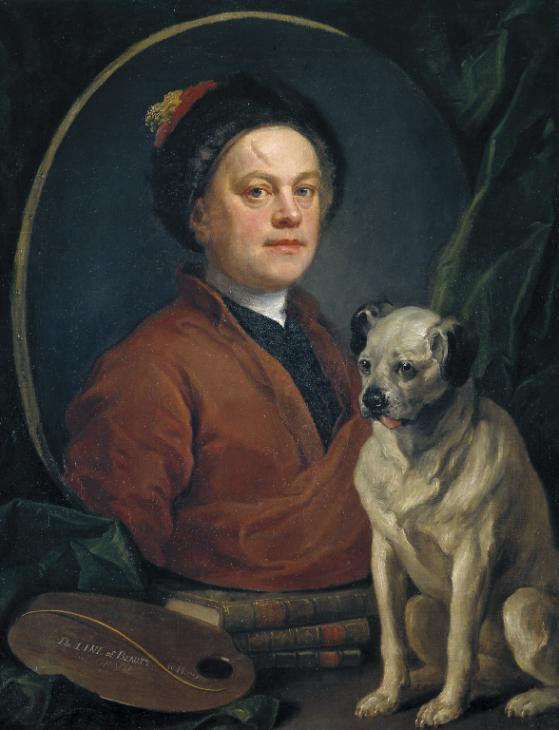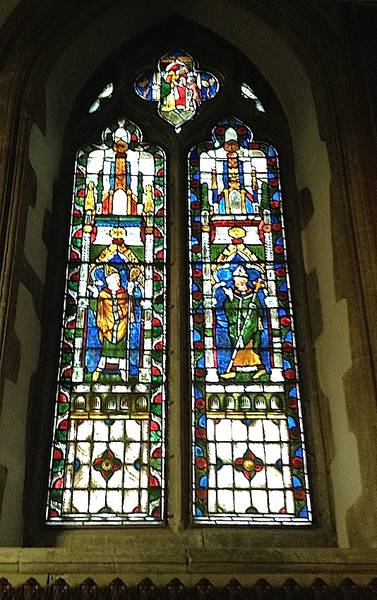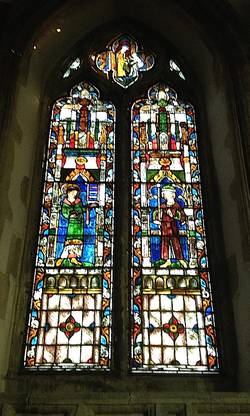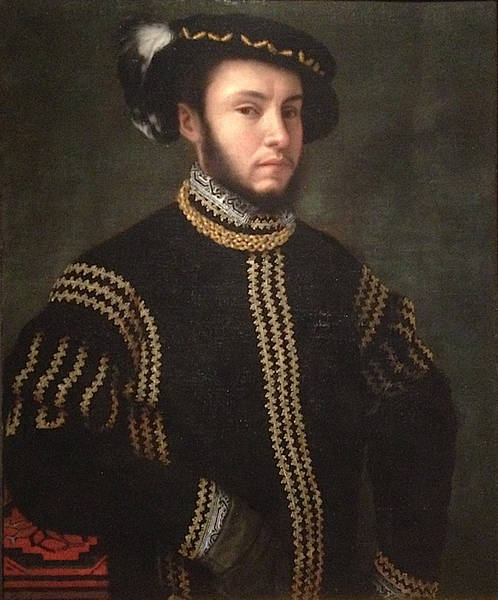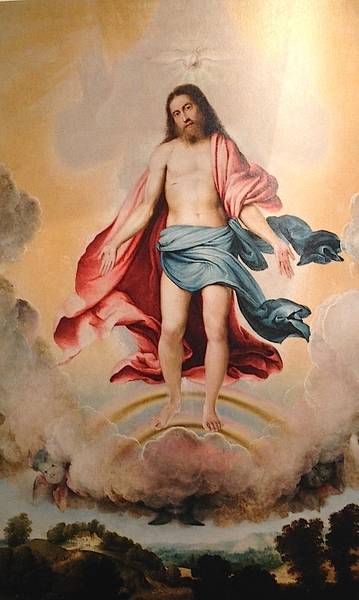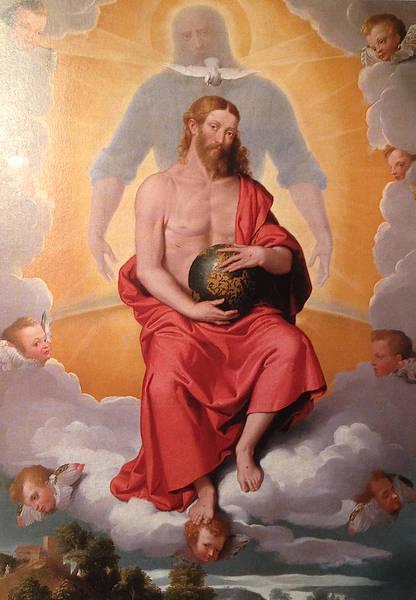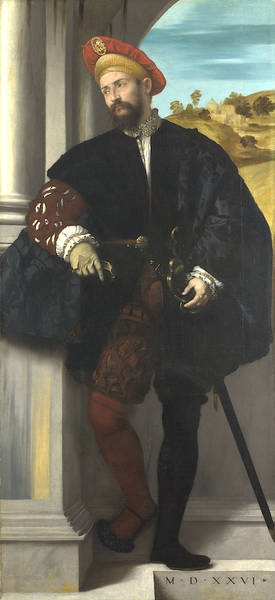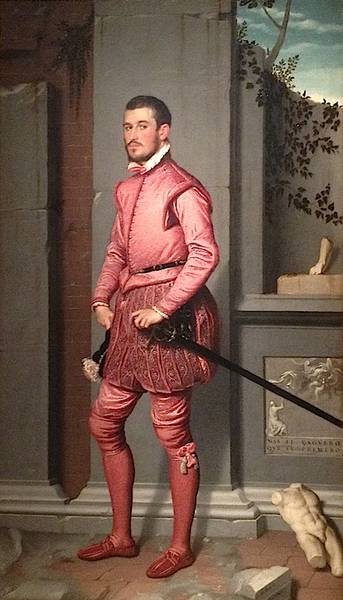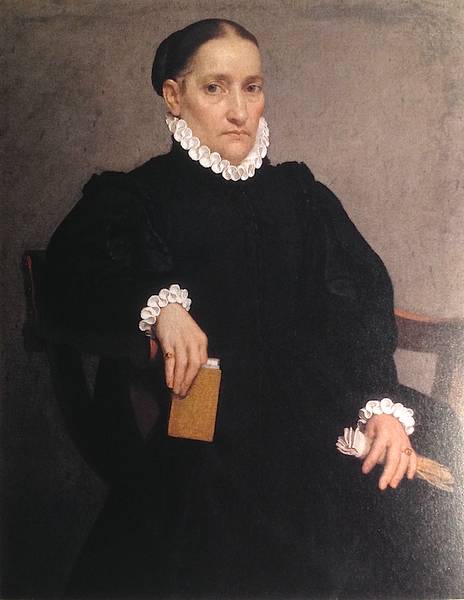Abstract Expressionism emerged in the 1940s in the United States and remained a predominantly American phenomenon. Its main characteristic, according to the Oxford Dictionary of Art, is the “desire to convey powerful emotions through the sensuous qualities of paint, often on canvases of huge size.” The Baroque movement of the 20th century, then? A Counter-Reformation against intellectual, social- and community-minded –isms, with all their rules and strictures, and a headlong, self-conscious race into the arms of feeling.
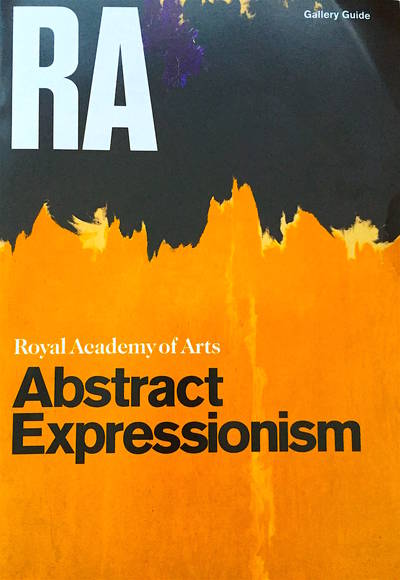
The genesis of the movement is well illustrated in the first room. Two early figurative works by Mark Rothko are hung on the right. Both date from 1936. One is his Self-portrait: the fat, red twisted lips and dark blind circles of eyes hidden by dark glasses strike a disreputable and sinister note. The other work is Interior, where a pair of ghostly white and faintly grotesque classicist sculptures flank a dark doorway populated by a huddle of brown-clad, white-faced, stricken-looking people. Normality and the conventional are shown distorted and turning ghoulish.
There is a scene in the film Funny Face where the character played by Audrey Hepburn, feeling angry and put upon by the character played by Fred Astaire, says: “Isn’t it time you realised that dancing is nothing more than a form of expression or release? There’s no need to be formal or cute about it. As a matter of fact, I rather feel like expressing myself now. And I could certainly use a release.” And then she dances. Wonderfully well. It is the only really good scene in the film.
Abstract Expressionism is like that. An emotional response to an external trigger. Dark times (world war, economic depression) cannot be argued away by reason, logic or objectivity. Objects turn ugly. What we can use is colour and gesture.
The exhibition rooms are crowded with visitors. The air hums with their whispered reactions. There is talk of “creative revelation” and of “traumatic experience”. These are personal responses. The artworks themselves are personal responses. Here we are as an audience, being called on to respond personally to a series of personal responses. This is art as me-journalism. And when the artist’s response succeeds in triggering a response of our own, either in reaction or in sympathy, the result is extraordinarily powerful. This is the ideal time to be looking again at these works, in an age so politically polarised that we can scarcely even sit at the same table as people who don’t agree with us. We need Abstract Expressionism to save us from fetishes and propaganda.
But is self-expression anything more than simple self-indulgence? Yes, if the self-expresser is equipped with the vocabulary to interpret his or her feelings productively. All (or almost all) of the artists represented in this show are very well equipped, and their eloquence elicits a productive response. The solemn, Beaux Arts neoclassicism of the exhibition rooms is a perfect foil for this art.
The problem, though, is that too many feelings are being expressed. And too few walls are available to harbour all the wealth of feeling that is outpoured. The result is a clamorous hubbub. And there are very few places to sit down. But perhaps this is a quibble. You need to give yourself time. This is not a show to see in a hurry.
The work of Arshile Gorky had a formative influence on the AbEx movement and an entire room is dedicated to him. He does not use the medium of abstraction to express emotions or ideas; he is rooted in Surrealism and his paintings send audiences scrabbling for figurative interpretations. The exhibition points out Gorky’s “knack for camouflaging forms so that their identities hover between the recognisable and the cryptic.” This means that we are perpetually trying to see forms in all his works, forms that will provide the meaning and the interpretation, like looking for recognisable shapes in clouds. We do this with The Orators, which the wall text tells us is an “artfully obscured scene of figures around the funeral bier of Gorky’s father.” The figures are either obscured too artfully or not obscured enough. We spend too long intellectualising, trying to make them take comprehensible shape. If we aren’t careful, we can talk a lot of rubbish about art like this. Fortunately AbEx didn’t linger there.
For a while perhaps it looked as if it was going to. Willem de Kooning, in his figurative phase, makes us sit and watch while he wrestles with the age-old male dilemma: Women. Do you worship them or make fun of them? Thankfully he emerges from it to give us his best work (and the finest two pieces in the room dedicated to him): Villa Borghese (1960) and Untitled (1961), generous patches of lemon yellow, blue, green and pastel pink, which evoke sunshine and tranquillity. Franz Kline’s violent black slashes across white backgrounds evoke cast-iron bridges, steelyards and gantries. They are like photography gone backwards into painting. One enjoys them in silence, they are all about atmosphere. So is Milton Resnick’s beautiful, wintry Octave, which strikes the viewer like a grey day at Giverny.
Monet is not the only artist echoed and challenged by these painters. Picasso also looms large. And Jackson Pollock’s Summertime 9A looks like a Mondrian pulled so tight that the black lines have stretched and buckled: released, they spring back into a knotted, rhythmic tangle, clotted with the yellow, red and blue areas of infill.
Age-old scriptural and mythological figures are abstractly explored by Barnett Newman: Adam, Eve, and Ulysses (1952). Tempting as it is in Ulysses to interpret the strongly divided planes of blue as representations of sea and sky, Newman has chosen to make his axis a vertical one. So we are left more with a mood and a feeling than an idea, and the result is restful. Vast landscapes are evoked by Clyfford Still. Ad Reinhardt puts a frame around black nothing to turn it into something, a thing to go on a wall, like a sort of anti-mirror, sucking all reflections in, giving nothing back.
And what about Rothko, who famously hoped to “ruin the appetite of every son of a bitch” who dined in the room where his Seagram murals were to hang? If they had ever been hung there, I doubt he would have succeeded. His Self-portrait or Interior would have appalled the sons of bitches. De Kooning’s Woman II would have had them running for the door. Rothko’s colour-field rectangles such as No. 4 (Untitled) couldn’t possibly. Here is an artist who set out with such aggressive intent, aiming to “defeat” the walls with the plenitude of his art. Yet the result is tremendously relaxing and satisfying. It is daring but it is not terrible. The whole gamut of human emotion is there, but there is no dissonance. Each tableau speaks like a still small voice of calm. Expressionism, when it is figural, is grotesque. When it is abstract, it is not, however belligerent or morbid the emotions that engendered it. The Rothko paintings, in the central octagon, are as gorgeous and uplifting as any juxtaposition of tragedy and ecstasy in a Baroque canvas of sacred apotheosis. Where they triumph (and where other Abstract Expressionist artists fail) is that they leave you with nothing to say. You can only feel.
The scale of these works, in terms of the value of their content, is in almost every case equal to their size. The “sensuous qualities of paint” are also important. What strikes one forcibly is how old-fashioned the works are. There is no dilettantish daubing at play here. We are dealing with a masterly handling of the medium. What people are responding to is not just the call on their emotions but also the sheer skill of the artists. No one would ever look at one of these works and say, “I could paint that.”
Abstract Expressionism at the Royal Academy, London, until 2nd January.







